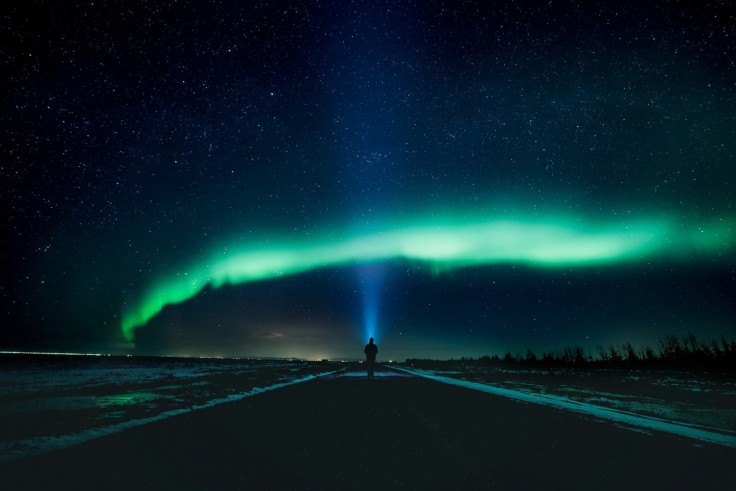Experiencing the Northern Lights, also known as the aurora borealis, is a breathtaking milestone for anyone. People often have a lasting impression once they see it in person.

While many dream of traveling to hotspot aurora places like Norway or Iceland, certain locations in the U.S. offer the same experience without needing to buy a plane ticket. States like Alaska, Michigan, and Minnesota provide a better view of this impressive phenomenon.
Although nothing beats witnessing it in person, it is also common for watchers to attempt to take a photo of the aurora. However, it takes more than a simple click on a smartphone.
Ready to keep that Northern Lights experience forever? Here are some equipment that you should prepare:
Camera, Lens
Having a camera with high ISO performance is the best way to capture an aurora. You should be able to manually adjust the exposure, aperture, and focus of your camera to adapt to the current situation in your location.
We often spot aurora pictures that are perfect as wallpapers. If you are aiming for this type of photo, make sure to pack a wide-angle lens, specifically with a fast aperture (f/2.8 or lower) and wide focal length (14-24mm).
Tripod
Invest in a sturdy tripod to ensure that your camera setup is stable. You should also check if they are capable of functioning well in cold conditions.
In addition, you can also get a ball head mount that allows smooth adjustments and a strong grip. Make sure to scout the location and find places with minimal light pollution to avoid any complications with the photos.
Remote Shutter Release
Aurora often takes a couple of minutes only. To capture its movement, a remote shutter release is needed. This prevents the camera from shaking once you decide to capture the moment.
Moreover, it is also perfect for long-exposure photos which require a stable camera setup to avoid any distortion to the picture. This also prevents shooters from panicking, especially for first-timers.
Extra Batteries
Most of the locations where auroras are seen are often extremely cold. Like extreme heat, too much cold can also affect the performance of the battery. Cold weather is notorious for draining batteries quickly.
Photographers must pack multiple fully charged spare batteries to avoid any inconvenience. In addition, you can also invest in portable power banks that can charge camera batteries.
When shooting in extremely cold weather, it is advisable for a photographer to prepare a lens heater and dew straps. These items will prevent the lens from fogging due to condensation.
Aurora Forecast Apps
Aside from news sites, you should also check out Aurora forecast apps which are designed to give real-time activity updates for the phenomenon. The weather plays a big role in astrophotography so make sure that there will be clear skies.
Apps like My Aurora Forecasts, Aurora Alerts, and Space Weather Live are some of the popular apps used by watchers and photographers.
Related Article : Farmers Experience Compromised GPS Amid Solar Storms









